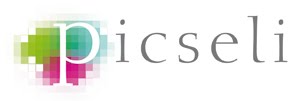If you do not currently have a website, you may not know where or how to start. This series is intended to help you ask the right questions of your web designer and to give you a bit of a head start for when the designer starts asking you questions.
Part 1 will cover things for you to think about.
1. Why do you want a website?
Have you been told you should have a website or do you have a genuine need for one?
If you’re doing it because you’ve been told you need one, the chances are you won’t buy into it, and a website does require some investment from you. Not just in terms of cash, but time and thought too.
Aside from that, what specifically do you want your website to do for you? Some examples are to:
· increase enquiries online and offline
· sell your product online direct to the retail or wholesale sectors
· provide company information to save costs printing brochures & leaflets
· manage customer support and improve customer communications
· launch a new product, service or brand
· provide information to clients or potential clients
Knowing what your website needs to achieve makes a big difference to how the website is designed and built.
2. Who is your audience and what do they want?
This could be one of the most difficult questions, but can give you the most benefit. Think about who the website is targeting and put yourself in their shoes. Remember that your primary aim and your visitors’ aims could be very different. If you are trying to sell a product, they may just be looking for information – the website is there to convince them to buy.
In the example above, if you want to sell your products and a visitor is likely to be looking for information it makes sense to make sure you have enough information available so that the potential customer feels satisfied, and may purchase online or has the information they need to purchase offline.
3. What content will the site include and how much?
Ideally, you should think about this from 2 points. The launch - how much content do you want to start with? Then a few weeks, months or years down the line - how much could your website grow? Again, this will vary depending on the answer to point 1. A company brochure site is likely to stay fairly static, whereas an e-commerce site or information site could start small and expand rapidly.
Think about the type of content too. Will there be video? PDF documents to download? Or will it be mainly text?
4. What functionality do you need from your site?
Do you want to be able to update the website yourself? Which content will you need to update?
Do you wan visitors to fill in forms online?
Will you have online payments? Or full e-commerce functionality?
The possibilities are endless, and you do not need necessarily need to have a complete features list written down, but thinking about the kind of thing you want your website to do will help your designed lead you in the right direction.
5. How do you want the website to look?
Design is subjective and open to countless possibilities, so while some designers love to be given a complete carte blanche when it comes to web design, it is often better to have some ideas of what you want.
As an example, we designed a website for a client. It was very dark, with greys and blacks, that made their orange logo & branding really stand out. The client hated it because they wanted a white, very light design – which unfortunately they hadn’t mentioned!
More often than not it can be what you don’t like that can be more helpful than what you do. Do if there’s a particular colour or type of image you don’t like, or you don’t like your menu on the left hand side of the screen, you don’t like a very minimal website – tell your designer!
Now you’ve hopefully thought about what you want from your website and have some notes to talk to your web designer about. In part two we’ll look at questions to ask your web designer.
.jpg)
